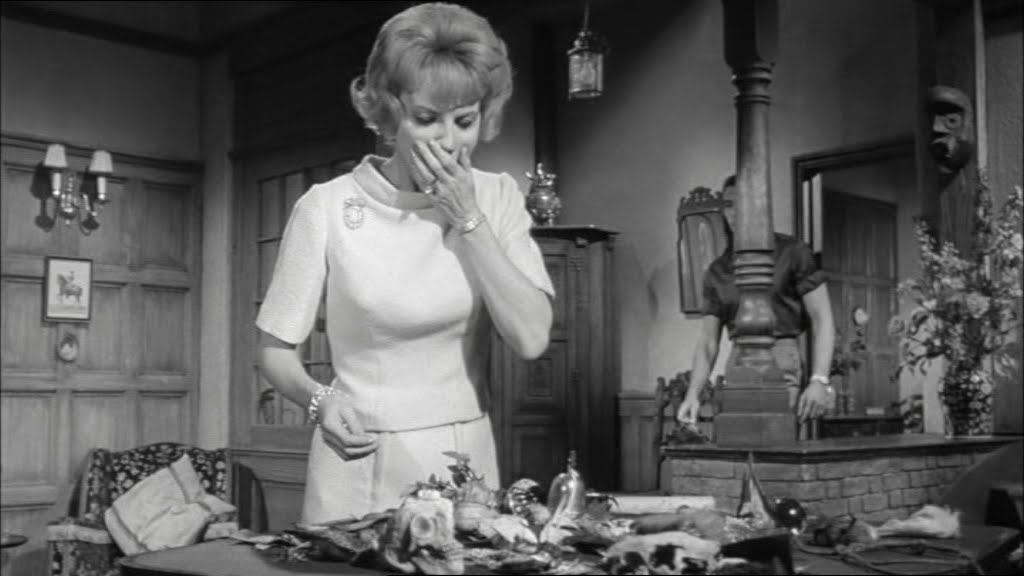Culture
The Bloody Truth: “Burn, Witch, Burn”

Every week in The Bloody Truth, Calhoun Kersten examines the deeper meanings beneath one of cinema’s deepest genres: horror.
Gender and horror have always been inextricably intertwined. From the complicated musings on the slasher film to the more female-friendly badass-ery of movies like The Descent, women have always been and will continue to be crucial to the horror narrative. The logic, at least in the male-dominated and hetero-centric horror industry, has always been that audiences will fear more for a pretty woman. Viewers are more likely to cringe at the blood-curdling shriek of a woman than the boisterous baritone of a man, or so we are told. But women do more than give us cues when to be scared. They also give us something to be scared of.
At least that’s the rhetoric at the heart of Burn, Witch, Burn, a 1962 British horror film about witchcraft. At the heart of the story is Professor Norman Taylor (Peter Wyngarde), a firm rationalist, who discovers his wife Tansy (Janet Blair) is practicing witchcraft. When he forbids her by destroying her charms and talismans, things go horribly awry for Professor Taylor. You see, Burn, Witch, Burn complicates the traditional horror equation of “woman = bad.” There’s more at stake for Taylor and Tansy. She has been practicing witchcraft for years, in order to advance her husband’s academic career.
Early on, the film makes it clear that not all witchcraft is bad. Tansy’s intentions, while misguided, are arguably nobler than any other characters. However, even then, she is seen as servile at best. While her proficiency at witchcraft could be seen as empowering, her only interest in magic is how it can benefit her husband more than herself. Furthermore, as Tansy becomes increasingly unhinged throughout the course of the movie, she more often than not is seen under the spell of another practicing witch. So few of Tansy’s actions are of her own free will, and even fewer are done for any reason other than to please her husband.
Tansy, while a likable enough character, is hardly a positive representation of the power of femininity. This is particularly troubling when examined under the traditional notion of witchcraft as an inherently female art form. Burn, Witch, Burn even makes it a point to have Norman Taylor laugh off Tansy’s praise of the male witch that taught her witchcraft. Too feminine for men to practice and too seemingly ridiculous for Taylor to believe, Tansy is stripped of any power she wields when her husband burns her occult materials.
Ultimately, the dialogue about gender in Burn, Witch, Burn is more complicated than the film is given credit for. After all, Tansy is a kind and caring wife who simply wanted to do what is best for her husband. While loftier goals would make for a more progressive message, she and her husband find happiness with one another in the final moments of the movie. Their domesticity is the saving grace of the characters. This is in stark contrast to the villainess of the film, Flora Carr (Margaret Johnston).
Flora is an abrasive personality, in and of herself. However, she is made even more so in her scenes with men. As the villainess, she is understandably antagonistic when she shares scenes with Norman Taylor. However, even more revealing are her scenes with her husband Lindsay (Colin Gordon). While one could argue that husband Lindsay is emasculated in title already, Flora constantly berates him and scolds him for his actions, making it clear that despite the “traditional” gender roles of the time, she is the commanding force in this relationship. The film establishes this dominance early on in Burn, Witch, Burn, but goes so far as to have Tansy placed under Flora’s spell. Through Flora’s power, she manages to almost drown Tansy, and when that fails she tries to make Tansy kill her husband. This type of power struggle, between female villain and male hero, is not at all uncommon, but is particularly pronounced in Burn, Witch, Burn.
Although Burn, Witch, Burn has one central villainess, the entire movie pits one man against countless women. In some scenes, Norman is at odds with a male student, but primarily because the student’s girlfriend is accusing Norman of wrongdoing. The film is essentially one man’s struggle in an increasingly feminized world. While this might seem dated to modern audiences, it is a telling glimpse into the gender struggles of the 1960s.